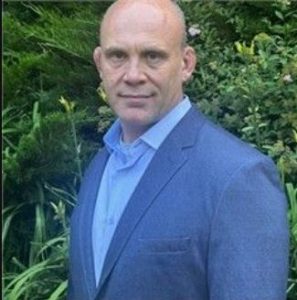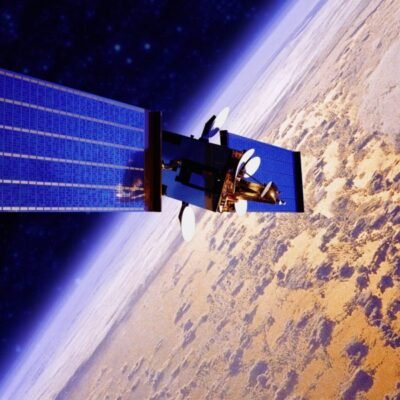Bill Wisotsky’s interest in quantum mechanics began in graduate school more than 20 years ago. For Wisotsky, a Principal Technical Architect at SAS, it was one of those ideas that takes root in your mind and doesn’t let go.

As Wisotsky’s career progressed from studying behavioral neuroscience and teaching statistics to building data integration frameworks and implementing predictive modeling projects, he kept coming back to the root understanding of quantum mechanics that shows up in nature as well as computing. As he continued to read and learn all that he could on the topic, he finally felt the technology caught up to the concepts in a way that he could start doing some experiments and applying quantum to his work with data and analytics.
I’ve taken some time recently to talk to Wisotsky about his career, his interest in quantum – and how that interest is playing out in his work at SAS. Our conversation dives further into his background and the nuances of this emergent technology. You’ll also read about quantum computing‘s significance, recent advancements and the challenges yet to come. Check it out.
How did you first get interested in quantum computing?

Bill Wisotsky: It started in the late 1990s when I was working on my PhD research in biopsychology and behavioral neuroscience. My area of specialization was measuring neural responses in the visual cortex using visual evoked potentials, a type of EEG [electroencephalogram].
Needless to say, I had to learn about all aspects of the visual system from the eye to the brain. While studying photoreceptors in the human retina, I learned that they process light in a quantum mechanical way.
A straightforward example is the retina, which has rods and cones. Rods are achromatic, and cones respond to different wavelengths of light in a probabilistic fashion. Modestly stated, photoreceptors responding to “wavelength” also absorb photons or “particles),” hence illustrating an example of the wave-particle duality.
This prompted me to learn more about quantum mechanics, leading me to read about things like the double slit experiment and Schrödinger’s cat. I found the quantum mechanics field very interesting or even strange, and let’s say I have wound up in a rabbit hole ever since. Back then, you could have seen me reading quantum physics books on the subway to and from the Bronx.
Then, I first learned about the potential of using quantum mechanics for computation, which Richard Feynman, Nobel Prize winner in Physics, had proposed. That concept and its implications were real science fiction at the time. Fast forward a little and back to the brain – over the years, researchers published more and more papers about different areas of the brain operating via quantum mechanics as well, and I’ve continued to read as much as I could on the topic.
When did you start working on quantum at SAS?
Wisotsky: About 10 years ago, I heard that quantum computers were no longer science fiction. There were experimental quantum computers that were not powerful at all, but they used principles of quantum mechanics for computations. I kept following this, and then about five years ago there seemed to be an explosion of technology in a short time. Now, quantum computers are becoming more powerful, almost daily, and more companies are getting involved and securing funding.
During COVID lockdowns, I looked online for a quantum computing classes and found a couple on Udemy. They had a sale for about $4.95 a class, so I purchased all they offered. I took those classes and was amazed at how far the field had actually come. There were programming languages, algorithms and more. Toward the end of COVID lockdowns, I got more involved and started learning multiple technologies.
At that time, I focused on D-Wave, IBM and Xanadu. I began writing programs and getting results, running things in simulators and on real quantum computers. It was really simple stuff, but still, it was working. At that point, I also tried to interface with SAS, using SASPY to prepare data in SAS, then reading into Python, running quantum, and bringing back results to SAS to create output.
That’s when I thought, okay, this is real. Even though the data sets were small (like the iris data set), it worked. I then started to navigate through SAS to find others who were interested in quantum, share my work and show them what I could do. Eventually, I found enough people at SAS who saw the potential of quantum to solve business problems, and here we are.
Explain the fundamental principles of quantum computing in layman’s terms and discuss how they differ from classical computing?
Wisotsky: At its most basic level, quantum computing is designed to use the principles of quantum mechanics to potentially achieve computational power that rivals today’s most powerful supercomputers for certain classes of problems. Quantum computing exploits these properties to perform calculations that either take too long or are too complex for classical computers to tackle efficiently.
Two examples of quantum principles that quantum computing exploits are superposition and entanglement. Let’s talk about an example of superposition, which I’ll purposely oversimplify. Unlike a classical computer whose bits can either be 0 or 1, superposition allows for a qubit to exist in 0, 1 or any probabilistic combination of 0 and 1. So if we have, let’s say, 10 bits and we would like to perform some calculation, we need to run the computation 210 or 2,048 times if we want to account for every possibility. However, with 10 qubits the computation would happen once across every combination at the same time, computing all possible solutions simultaneously.
Next, the principle of entanglement describes the correlation of qubits, therefore if you know the state of one qubit, you know the state of the qubit its entangled with. This is an interesting phenomenon, because this entanglement is distance independent. Therefore, if you have entangled particles on opposite sides of the galaxy, knowing the state of one you automatically know the state of the other. As you can imagine, these principles by themselves are super powerful, but combined, you can let the imagination run wild.
Through these quantum physical properties, quantum computers can examine all potential solutions to a problem simultaneously and identify the correct solution with the highest probability.
What current advancements is SAS seeing in quantum computing research? How do these advancements signal progress toward practical applications?
Wisotsky: The main advancements include a greater number of good quality qubits, which ultimately results in larger, more complex and therefore more realistic problems being solvable. Qubits are the smallest functional unit of QPU [quantam processing unit], analogous to classical bits. The larger the number of computation qubits results in larger problems being solved on the QPU. Better quality qubits result in more reliable results that are less prone to noise and instability.
Another advancement being researched is quantum storage, such as QRAM. Right now, QRAM is still theoretical, but if it moves from theory and research into reality, it can be a real game changer. This is important in areas such as quantum machine learning and AI, where classical data needs to be encoded into quantum states. This process can take a considerable amount of time.
These advancements are evolving weekly.
What are the main challenges hindering the widespread adoption of quantum computing, both in terms of hardware development and algorithmic design?
Wisotsky: Because qubits are extremely sensitive to environmental noise, some qubit modalities must be stored in large refrigerated isolation chambers colder than space. However, progress has also been made on this front with modalities such as neutral atoms and quantum dots. Also, quantum states are very unstable, lasting in the order of micro-seconds. This is called quantum decoherence. Therefore, the longer the quantum process runs, the greater the probability of it being affected by noise and the more likely the quantum state becomes unstable. The result is that the final outcome may just be random noise. Quantum computers have come a long way with error correction and qubit quality, but error correction itself incurs a cost. Depending on the error correction algorithm, any number of physical qubits can make up a single computational qubit. For example, if you have 100 physical qubits, you may only wind up with 50 or so computation qubits – and typically even less.
These challenges are constantly being met with evolving solutions, such as better quantum hardware and better quantum-classical hybrid solutions. Thus, quantum does what it is best at, and classical does the rest, minimizing the potential for noise and decoherence.
What is SAS doing with quantum computing technologies today?
Wisotsky: SAS has successfully used quantum computing to tackle some real-world optimization problems. We have seen very promising results using hybrid, two-stage algorithms that can significantly increase the speed to solution and find optimal and near-optimal solutions in a significantly shorter amount of time than classical optimization by itself.
SAS is also experimenting in areas such as quantum machine learning and AI, quantum chemistry and natural language processing.
What excites you the most about the future of quantum – and the role SAS can play in that future?
Wisotsky: There are so many things that excite me. I’ve witnessed something that was science fiction turned into reality. With all the advancements, it’s just a matter of time before quantum computing regularly tackles certain functional problems that classical computers can’t or find too challenging. I think areas like optimization, machine learning, AI, life sciences, molecular design and risk will benefit most. The breakthroughs we will see are unimaginable once quantum advantage for these types of problems is achieved.
We must remember that quantum technology today is like personal computing in the 1970s. No one then could have ever imagined all the long-term impacts. SAS is the world’s analytics leader in all these areas, so who better to lead and integrate this technology? Imagine being a SAS user and being able to push a model’s processing or part of it to a quantum computer to solve significantly faster, see multiple solutions or even tackle problems of a size and complexity not previously capable. It could truly be revolutionizing.





